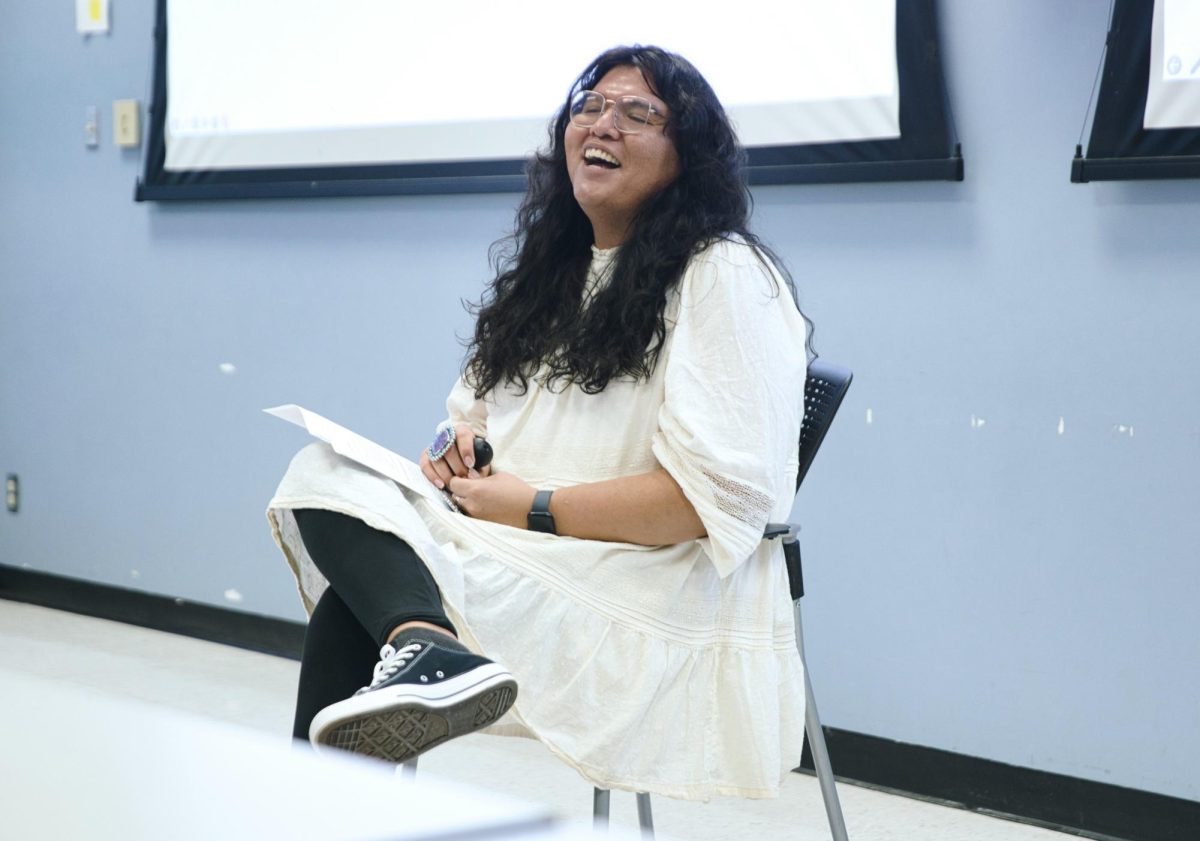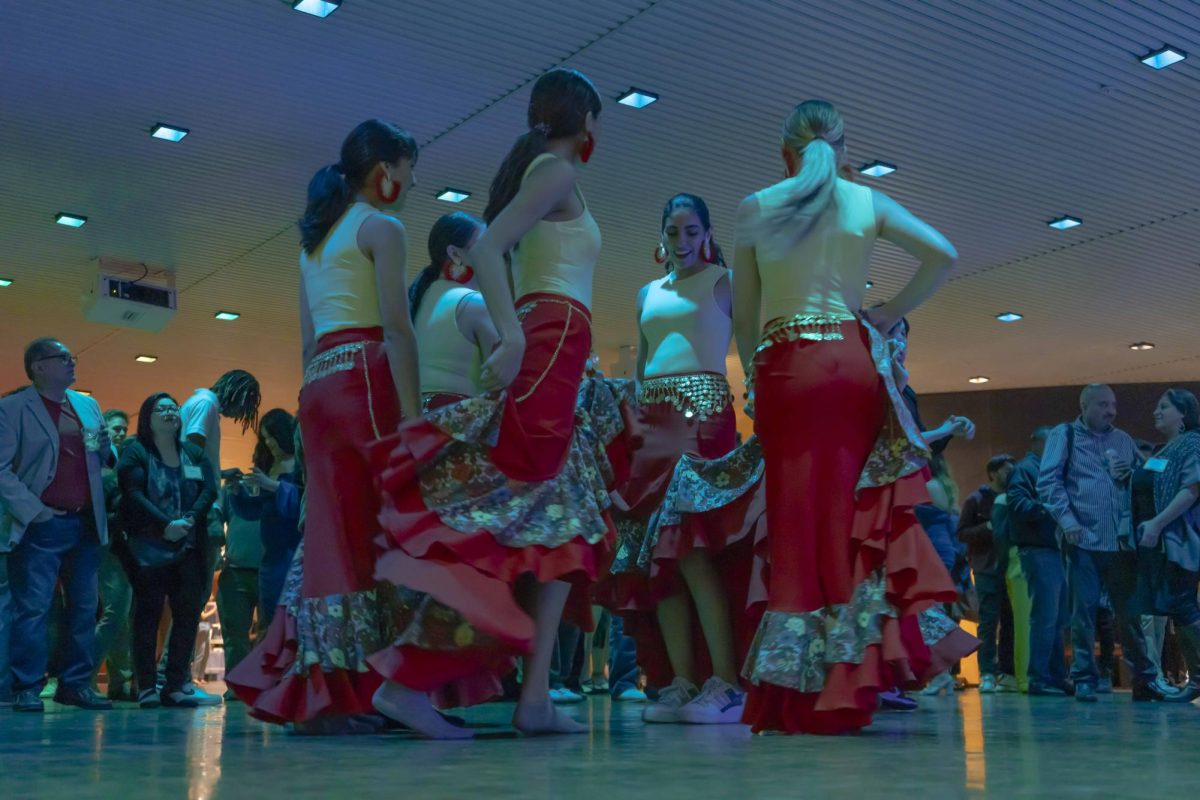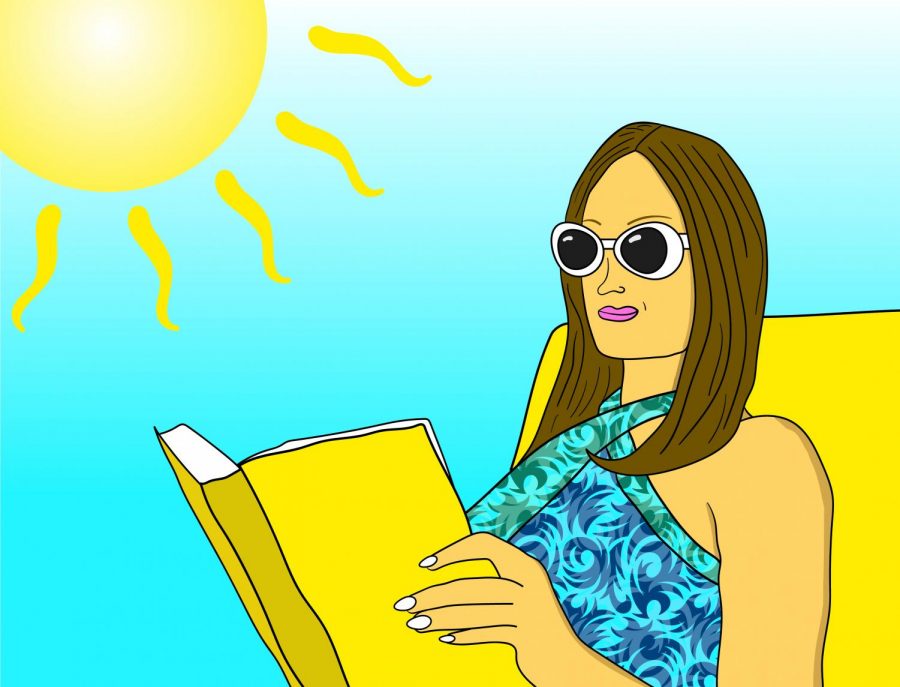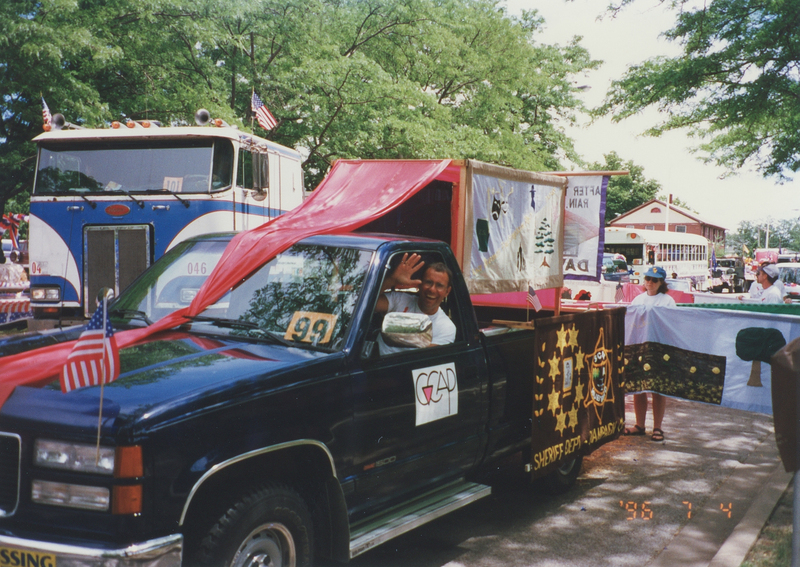In 1990, Elder Myra Laramee, a member of the Fisher River Cree Nation, introduced the term “two-spirit” during the Third Annual Intertribal Native American, First Nations, Gay and Lesbian American Conference held in Winnipeg, Canada.
This term acknowledges the gender-nonconforming and LGBTQ+ Indigenous ancestors who have been around since pre-colonial times and continue to exist.
Social media content creators have described “two-spirit” as embodying a male and feminine spirit. However, this term carries a deeper cultural significance. It is an empowering term and identity that defies colonialism and has boundless meaning to different Native American communities, according to Indigenous scholar Charlie Amáyá Scott.
In a crowded room in the College of Education, Scott visited the University to discuss the history and celebrate the identity of LGBTQ+ and two-spirit individuals, highlighting their resilience in preserving their identities on Nov. 30.
Scott, a graduate student at the University of Denver and Diné trans femme influencer, described two-spirit as having no specific meaning attached to it.
Get The Daily Illini in your inbox!
“The way that I have described two-spirit to people is that it’s really meant to be a contemporary movement to communicate and describe possibilities of who we were, of who we are, of what we are, of who we will be,” Scott said. “Two-spirit is the beginning of trying to understand who you are within your community.”
Scott was invited to campus by Charlotte Davidson, director of the Native American House, to discuss their recently published chapter in an academic anthology featuring various Indigenous scholars.
“Charlie is a contributor to a book titled ‘Developments Beyond the Asterisks: New Scholarship and Frameworks for Understanding Native Students in Higher Education,’” Davidson said. “Charlie’s chapter is one of the newer topics that is being introduced in the book.”
Scott co-wrote this chapter with Prestin Kinanâskomitinâwâw, a two-spirit Cree poet and advocate. The chapter is titled “In the Spirit of Relation and Kinship: Supporting Indigenous Two-Spirit and LGBTQ+ Relatives,” a topic Scott said is rarely explored in higher education.
“Something I’m quite in awe of is that my chapter was probably the first and only chapter in high education from an Indigenous trans femme scholar to write about two-spirit and LGBTQ+ students,” Scott said.
Scott also explained how the book’s publication and its authors are significant for the Indigenous community.
“Something that’s very wonderful about this book is that it was written entirely by Indigenous scholars in my field,” Scott said. “So that’s just something to celebrate and something that I’m just honored to talk about and have been a part of.”
During the presentation, Scott explained whenever they talk about the colonial gender binary imposed on Native Americans, they often return to the subject of colonialism and Indian boarding schools.
In pre-colonial times, Native American cultures had diverse beliefs about gender. Many gender-nonconforming Indigenous people were highly respected in their communities. In the Navajo nation, some were healers, medicine people, educators and storytellers.
According to Scott, it wasn’t until colonizers forced Indigenous people to culturally assimilate that homophobia and the colonial gender binary were introduced into these communities.
“How we understand what it means to be a man and woman is really rooted in this sort of history of colonization,” Scott said. “And so the gender and sexuality of Indigenous peoples were considered savage, considered primitive.”
Forced cultural assimilation took the form of Indian boarding schools, where native children were often separated from their families and punished for speaking in their native language or practicing their ancestral customs.
This deliberate cultural erasure is especially evident in the famous 1882 before and after photographs of Tom Torling — a member of the Navajo Nation who attended one of these boarding schools.
“Tom was photographed before and after attending the Carlisle Indian Industrial School,” Scott said. “And the second photo, Tom’s hair was cut in the style of what was considered civilized and appropriate for a young man. And then his clothes of his ancestors were removed, probably burned and were replaced with a student (uniform).”
This stigmatization, homophobia and pressures of conforming to gender norms continue to this day even in Indigenous communities, according to Scott.
Scott explained the Navajo Nation only recognizes marriage between a man and a woman, prohibiting same-sex marriage since 2005.
“Unfortunately, marriage equality is not recognized on several nations,” Scott said. “As much as I love tribal sovereignty, unfortunately, tribal sovereignty is the reason that the Navajo Nation does not recognize this marriage between two people of different genders.”
Tribal sovereignty refers to Native American communities’ right to self-govern. According to Scott, there’s no anti-discrimination policy protecting sexual orientation or gender identity within various nations.
When Scott was exploring and expressing their gender identity, their mother had a difficult time accepting their journey.
“We argued about my transness,” Scott said. “She didn’t understand why my English pronouns being they/them were so important to me.”
It was later discovered their mother was afraid for Scott’s life and believed it would’ve been dangerous living and identifying as transgender.
“I’ve found out she was just afraid,” Scott said. “Her entire life she was just afraid for what might happen to me. She had these assumptions that being like a masculine cis-queer person would be a lot safer than being the feminine queer trans person.”
Nevertheless, Scott’s relationship with their mother has improved and she remains supportive of them.
Although there are discriminatory policies and pressures of conforming to gender norms, Scott affirms that Native Americans, including two-spirit and LGBTQ+ individuals, still continue to persevere and exist despite centuries of violence.
“Being here, especially within the last of the years, there have also been a reemergence of stories and memories of relatives who exist and defy exceptionality and gender and who do not constrain themselves to the comfort of colonizers,” Scott said.
As a result, Native Americans who identify themselves as two-spirit can be seen as reclaiming their cultural past and challenging colonialism.
“By declaring yourself as two-spirit, you are sort of acknowledging and honoring that there are political, cultural and historical obligations, responsibilities that were and are unique to those who are two-spirit,” Scott said.
Janet Elaine Guthrie, community member and University alum, and her husband had come to the event to further their understanding of Native American culture.
“We are supporting in various ways the excellent work of Native American House and seeking to find ways to also learn more about Indigenous history, culture, ways that we can be part of bringing greater justice into the lives of Indigenous peoples and helping all the rest of us,” Guthrie said.
What surprised Guthrie about the event was learning about the origins of how the term “two-spirit” came to be and how recent its development was.
“I had imagined that (term) was very deep within Indigenous culture, and perhaps it’s deep without having had that name or that term attached to it,” Guthrie said.
Davidson hoped Scott’s lecture enlightens the event’s attendees to understand there are different perspectives of the Native American student experience.
“The native student higher education communities across the United States are very diverse and different,” Davidson said. “They have intersecting identities, other salient identities, and so I hope that their topic and their talk just really broadens the worldview.”













